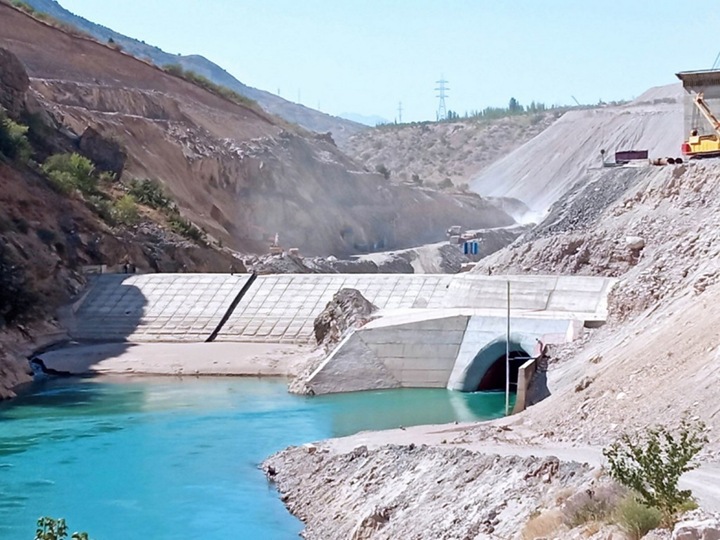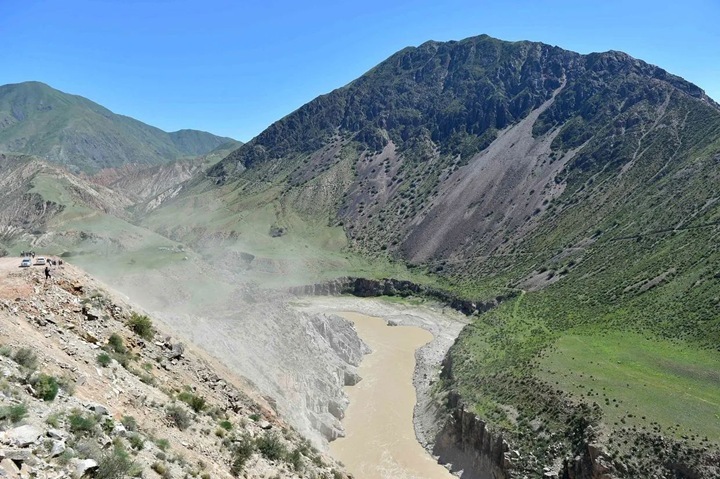Western Tien Shan: new dams threaten UNESCO World Heritage Site
The large-scale and rapid development of hydropower construction in Kazakhstan, Kyrgyzstan and Uzbekistan creates an immediate danger to the transboundary UNESCO World Heritage Site “Western Tien Shan”. Based on a detailed analysis of carefully collected data on the current state of the unique natural complex, the international ecological coalition “Rivers without Boundaries” (Rivers without Boundaries) appealed to the UNESCO World Heritage Committee with a proposal to include the Western Tien Shan site in the List of World Heritage under Threat.

The Western Tien Shan Natural Complex, recognized as a UNESCO World Heritage Site in 2016 for its exceptional biodiversity and unique ecosystems, covers key protected areas in three Central Asian countries. However, the current boom in hydropower projects jeopardizes precisely those values for the protection of which this high international status was obtained. The analytical report of the Rivers Without Boundaries coalition shows an alarming picture: at least five dams have been built in the recent past, and another 15 to 40 new hydroelectric dams are at different stages of the project cycle – from planning to active construction – on rivers that are critical to the ecological integrity of the Western Tien Shan and adjacent territories belong to him. The Chatkal, Pskov, Ugam, Koksu, Aksu, Arys, Sairamsu and other vital waterways of the region have come under unprecedented pressure, which represents a sharp escalation of threats compared to the situation just five years ago.
Of particular concern are projects implemented directly within the boundaries of the World Heritage Site or having a direct impact on it. In Kyrgyzstan, plans for the construction of the Chatkal Dam inside the heart of the Western Tien Shan – the Besh–Aral Nature Reserve are progressing, and meanwhile, alluvial gold mining is destroying the valley of the Chatkal River itself on the territory of the reserve. In Kazakhstan, within the boundaries of the Sairam-Ugam National Park, also part of the UNESCO Western Tien Shan site, it is proposed to build a Dam cascade and a conduit on the Ugam River. Many small Dams are planned on the rivers flowing from the territories of the Western Tien Shan in the basin of the Arys River. In Uzbekistan, the Nizhne-Chatkal Dam is being built directly downstream from the Besh-Aral Nature Reserve in Kyrgyzstan, which creates risks for the components of the Western Tien Shan upstream and may lead to flooding of part of the Kyrgyz territory of the UNESCO heritage site. A large cascade of Dams under construction on the Pskov River threatens landscape connectivity in the Ugam-Chatkal National Park surrounding the components of the Western Tien Shan, and the recently completed Ugam Cascade of Dams in Uzbekistan already isolates important habitats in the Kazakh part of the World Heritage Site.
“We are witnessing an alarming trend when short–term economic interests in hydropower are placed above the long-term preservation of a unique natural heritage of planetary significance,” says Yevgeny Simonov, international coordinator of the Rivers Without Boundaries environmental coalition. “The scale of the planned construction on the rivers that feed this site requires immediate intervention by the UNESCO World Heritage Committee and the international community.”
Environmentalists note that the construction of dams in the Western Tien Shan leads to the fragmentation of critical river and terrestrial habitats, isolating animal populations and disrupting the ecological connectivity of the landscape. Unique and endangered species such as the endemic Chatkal stonefish (Cottus jaxartensis), naked stonefish (Cottus nudus), other endemic fish species and even the snow leopard (Panthera uncia). There is a degradation of unique ecosystems of river valleys, including floodplain forests-tugai and habitats of wild ancestors of fruit trees.
“The plans to build a Dam inside the Besh-Aral Nature Reserve or the Sairam-Ugam National Park are a direct encroachment on the integrity of the World Heritage Site,” emphasizes Alexander Kolotov, regional director of the ecological coalition Rivers Without Boundaries. – Underestimating the impact on aquatic ecosystems, especially on the unique ichthyofauna, and ignoring the cumulative effect of Dam cascades is a path to the loss of biodiversity that cannot be restored. It is necessary to immediately stop all dangerous projects and conduct a truly independent and comprehensive assessment of projects with the participation of all stakeholders.”
Environmentalists believe that the current situation has led to a violation of the international obligations of the countries of the region under the World Heritage Convention, the Aarhus Convention (regarding access to information and public participation) and the Espoo Convention (regarding transboundary environmental impact assessment). The coalition “Rivers without Boundaries” appealed to the UNESCO World Heritage Committee to include the Western Tien Shan transboundary site in the List of World Heritage in Danger at the upcoming 47th Session of the World Heritage Committee in July 2025.


